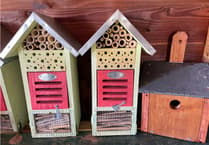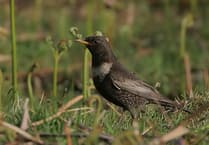More than 60 local people attended a community event at Victoria Hall, Llanwrtyd Wells, to discover how organisations are working together to protect freshwater biodiversity in the River Irfon catchment.
Run by wildlife conservation charity Freshwater Habitats Trust, the Irfon Sustainable Management Scheme-funded (SMS) community event brought together speakers from organisations including Natural Resources Wales, the National Trust, Dŵr Cymru Welsh Water, the Wildlife Trusts Wales and the Wye and Usk Foundation.
Working collaboratively, the Irfon SMS project is developing a new approach to landscape-scale management of freshwater and wetland biodiversity, focusing on using the Irfon as a demonstration catchment.
Geraint Watkins, local farmer and forester and chairman of the Irfon Catchment Resilient Freshwater Habitats project chaired the event. He said: “With the pressures mounting on water quality in all rivers we need to better understand where the issues are on the Irfon. This includes ensuring we are monitoring everyone’s input and not making assumptions.”
Katie Fincken-Roberts of Natural Resources Wales shared insights on why the Freshwater Pearl Mussel - a critically-endangered species still found in the Irfon - is an indicator of water health. Dan Humpreys of Dŵr Cymru provided an update on the company’s infrastructure and monitoring works in the Irfon catchment. National Trust representative Jake Cohen spoke about peatland restoration works on Abergwesyn Common in the headwaters of the catchment and Bridie Whittle of the Wye and Usk Foundation highlighted the importance of working at catchment level.
Freshwater Habitats CEO Professor Jeremy Biggs and Senior Plant Ecologist David Morris shared results from the charity’s work in the Irfon catchment over the last two years. This has included water quality testing, involving local volunteers, and species monitoring, using cutting-edge eDNA techniques.
Jeremy highlighted the importance of the whole water environment, including all running and standing waterbodies, large and small. He said: “The Irfon catchment isn’t just the River Irfon and its tributaries but also the huge network of ponds, streams and wetlands that spread across the landscape. We need to treat these habitats as an interconnected network, making use of the best evidence of ‘what works’ to protect them.
“Small waters make up about 80 per cent of the UK’s freshwater environment and there’s increasing awareness of their importance. Research has shown that, together, they support more biodiversity, including higher numbers of rare and threatened species, than rivers or lakes.
“Sadly, we have little to no information about the majority of these waterbodies, so it’s difficult to identify and protect the most important parts of this network of habitats. However, the Irfon project is helping us to understand more about what we can do to protect this landscape’s exceptional freshwater wildlife community. It’s also playing a part in our vision to build the Freshwater Network – a network of wilder, wetter, cleaner, more connected freshwater habitats for wildlife across England and Wales.”
The River Irfon project is funded through the Sustainable Management Scheme (SMS) grant as part of Welsh Government Rural Communities under the Rural Development Programme for Wales (2014-2020), which is funded by the Welsh Government and the European Union.
The Irfon Sustainable Management Scheme-funded (SMS) community event took place on February 23.




